6 environmental research studies reveal critical health risks from petro-plastic
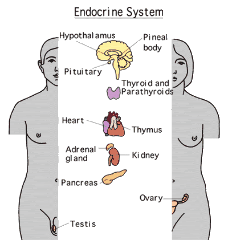 In a series of environmental research studies, scientists call for regulatory action to prevent dire health effects of man's exposure to petroleum based plastics. Exposure to Bisphenol A (BPA), phthalates and flame retardants (PBDEs) are strongly associated with adverse health effects on brain development and reproductive organs of humans and laboratory animals, the scientists found. A special section in the October 2008 issue of Environmental Research, titled "Plastic World", provides critical new research on these environmental contaminants and their adverse reproductive and behavioral effects.
In a series of environmental research studies, scientists call for regulatory action to prevent dire health effects of man's exposure to petroleum based plastics. Exposure to Bisphenol A (BPA), phthalates and flame retardants (PBDEs) are strongly associated with adverse health effects on brain development and reproductive organs of humans and laboratory animals, the scientists found. A special section in the October 2008 issue of Environmental Research, titled "Plastic World", provides critical new research on these environmental contaminants and their adverse reproductive and behavioral effects.Plastic products contain "endocrine disrupting chemicals" that can block the production of the male sex hormone testosterone (phthalates used in PVC plastic), mimic the action of the sex hormone estrogen (bisphenol A or BPA used in polycarbonate plastic), and interfere with thyroid hormone (brominated flame retardants or PBDEs used in many types of plastic).
Two articles report very similar changes in male reproductive organs in rats and in humans related to fetal exposure to phthalates. Two articles show that fetal exposure to BPA or PBDEs disrupts normal development of the brain and behavior in rats and mice. Two other articles provide data that these chemicals are massively contaminating the oceans and causing harm to aquatic wildlife (and here).
The other studies integrate new laboratory research with a broader view reflecting exposures to a variety of chemicals in plastic. These ubiquitous chemicals found in many plastics act independently and together to adversely affect human, animal and environmental health.
The articles show amongst others the massive contamination of the Pacific Ocean with plastic, and the amount of contamination has increased dramatically in recent years; animal brain structure, brain chemistry and behavioral effects from exposure to BPA and "phthalate syndrome" in rats' male offspring.
For the first time a series of articles will appear together that identify that billions of kilograms of a number of chemicals used in the manufacture of different types of plastic can leach out of plastic products and cause harm to the brain and reproductive system when exposure occurs during fetal life or prior to weaning. - Dr. Frederick vom Saal, Guest Editor of theme issue "Plastic World""Not only are these studies of scientific importance, they also contribute to the ongoing US congressional hearings involving the Food and Drug Administration," remarked Gert-Jan Geraeds, Publisher of Environmental Research. As such, "The Plastic World" has a broader societal impact and raises awareness of increasingly important environmental issues:
 energy :: sustainability :: biomass :: bioplastic :: oil :: plastics :: toxicity :: ocean :: wildlife :: reproductive organs :: hormones :: brain development :: endocrine system organs ::
energy :: sustainability :: biomass :: bioplastic :: oil :: plastics :: toxicity :: ocean :: wildlife :: reproductive organs :: hormones :: brain development :: endocrine system organs :: Environmental Research: A Multidisciplinary Journal of Environmental Sciences, Ecology, and Public Health publishes original reports describing studies of the toxic effects of environmental agents on humans and animals. The principal aims of the journal are to define the etiology of environmentally induced illness and to increase understanding of the mechanisms by which environmental agents cause disease.
Illustration: the male and female endocrine system.
References:
Frederick S. vom Saal, Stefano Parmigiani, Paola L. Palanza, Lorne G. Everett, Richard Ragaini, "The plastic world: Sources, amounts, ecological impacts and effects on development, reproduction, brain and behavior in aquatic and terrestrial animals and humans", Environmental Research, 108 (2008), pp. 127 - 130
Charles James Moore, "Synthetic polymers in the marine environment: A rapidly increasing, long-term threat", Environmental Research, 108 (2008), pp. 131 – 139
Jörg Oehlmann, Matthias Oetken, Ulrike Schulte-Oehlmann, "A critical evaluation of the environmental risk assessment for plasticizers in the freshwater environment in Europe, with special emphasis on bisphenol A and endocrine disruption", Environmental Research, 108 (2008), pp. 140 – 149
Paola Palanza, Laura Gioiosa, Frederick S. vom Saal, Stefano Parmigiani, "Effects of developmental exposure to bisphenol A on brain and behavior in mice", Environmental Research, 108 (2008), pp. 150 – 157
Chris E. Talsness, "Overview of toxicological aspects of polybrominated diphenyl ethers: A flame-retardant additive in several consumer products", Environmental Research, 108 (2008), pp. 158 – 167
Kembra L. Howdeshell, Cynthia V. Rider, Vickie S. Wilson, L. Earl Gray Jr., "Mechanisms of action of phthalate esters, individually and in combination, to induce abnormal reproductive development in male laboratory rats", Environmental Research, 108 (2008), pp. 168 – 176
Shanna H. Swan, "Environmental phthalate exposure in relation to reproductive outcomes and other health endpoints in humans", Environmental Research, 108 (2008), pp.
Article continues
 --------------
--------------
 Mongabay, a leading resource for news and perspectives on environmental and conservation issues related to the tropics, has launched Tropical Conservation Science - a new, open access academic e-journal. It will cover a wide variety of scientific and social studies on tropical ecosystems, their biodiversity and the threats posed to them.
Mongabay, a leading resource for news and perspectives on environmental and conservation issues related to the tropics, has launched Tropical Conservation Science - a new, open access academic e-journal. It will cover a wide variety of scientific and social studies on tropical ecosystems, their biodiversity and the threats posed to them.


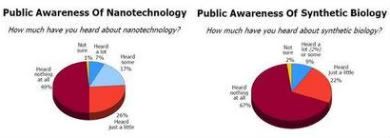
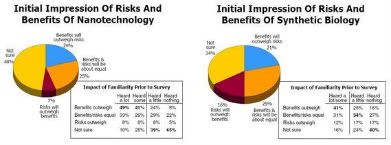
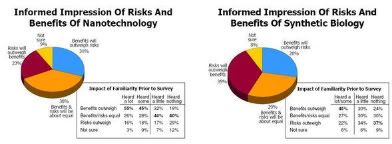

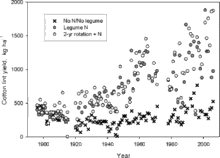







Friday, October 03, 2008
Breakthrough: biochemists find method for bypassing aluminum toxicity effects in plants
For many years, scientists have puzzled over how toxic levels of aluminum damage the growing root. The popular understanding is that aluminum binds to several targets in the root system, blocking cell division, damaging DNA, and ultimately interrupting plant growth.
Now, working on the model plant Arabidopsis, a team of scientists from the University of California, Riverside has determined that it is not aluminum toxicity that is directly responsible for inhibiting plant growth. The researchers identified a factor in plant cells, called AtATR, that functions as a built-in DNA surveillance system for alerting the plant of damage from excess aluminum and shutting down growth.
The researchers' experiments showed that AtATR can be manipulated to greatly enhance aluminum tolerance, resulting in plants whose roots can grow normally in soils that contain toxic levels of aluminum. Study results appear in the Oct. 14 issue of Current Biology.
The research, which gives scientists new insights into how aluminum tolerance works in plants, offers a new strategy for engineering crop plants that can tolerate growth in aluminum-toxic environments, increasing crop production in areas that otherwise could not sustain agriculture
Larsen explained that a root tip has a "quiescent center" that houses stem cells – master cells, maintained throughout the life of the root, that develop into cell types and tissues. Aluminum toxicity results in the loss of these stem cells, and consequently cell division, bringing growth to a halt:
"Knocking off AtATR's functioning maintains the quiescent center," said Larsen, who joined UCR's Department of Biochemistry in 2000. "In our study, we broke AtATR throughout the plant. But if we can break this factor only in the root tip, the plant will not sense aluminum's damage to the root. The root then continues to grow and we regain productivity."
The researchers' experiments involved introducing random mutations throughout the genome of Arabidopsis and screening for those roots that can grow in the presence of high levels of aluminum.
A silvery-white metal, aluminum is the most abundant metallic element in the Earth's crust. Never found in the metallic form in nature, it occurs instead in compounds. Next, Larsen's lab will work on identifying other factors in plants that detect DNA damage. His lab also plans to induce the AtATR mutation into crop plants such as tomato and corn to increase their aluminum tolerance.
Larsen was joined in the research by Megan A. Rounds, his graduate student. Grants from the National Science Foundation and the United States Department of Agriculture funded the five-year study.
UCR's Office of Technology Commercialization has applied for a patent on Larsen's discovery, and is looking for commercial partners interested in developing the technology.
Map: global distribution of acidic soils, where aluminum toxicity is a major problem. Acidic soils indicated in brigh and dark red tints. Source: FAO.
References:
Megan A. Rounds and Paul B. Larsen, "Aluminum-Dependent Root-Growth Inhibition in Arabidopsis Results from AtATR-Regulated Cell-Cycle Arrest", Current Biology, ahead of print, October 2, 2008.
Article continues
posted by Biopact team at 1:59 PM 1 comments links to this post
